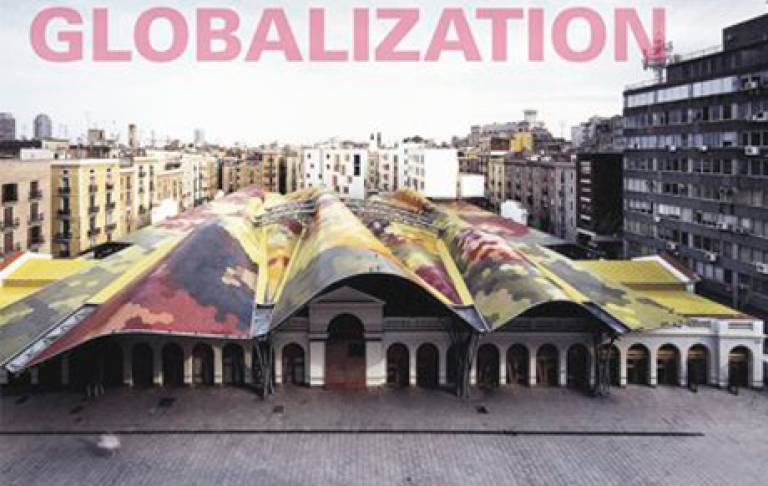Globalisation or Regionalism?
15 May 2012

Half-day symposium held at the Bartlett School of Architecture
Friday 27th April 2012
Reviewed by Eva Branscome, PhD Candidate in Architectural History and Theory
In today’s world of shrinking global boundaries, expanded communication and simultaneous cultural splitting, the debate of globalization and regionalism within architecture is more crucial than ever. At the end of April 2012, Alexander Tzonis and Liane Lefaivre were invited for the first time ever to the Bartlett School of Architecture for a lively panel discussion that coincided with the publication of their newest book, Architecture of Regionalism in the Age of Globalization: Peaks and Valleys in the Flat World (London/New York: Routledge, 2012).
Alexander Tzonis and Liane Lefaivre explained that globalization and regionalism have today become inseparable concepts. They are flip sides of the same coin. What they see as the ‘flattening’ of cultural difference through increasing globalization brings forward as a necessary counterpoint a search for self-identification by means of regionalism.
The event was chaired by Murray Fraser, Professor of Architecture and Global Culture who brought together an international panel of speakers for this occasion. The topics ranged from postcolonial architecture in India and Kuala Lumpur, as presented by Dr Tania Sengupta and Dr Yat Ming Loo respectively, as well as Ricardo Agarez’s discussion on regionalist inflected modern architecture of the 1950s Algarve in southern Portgual.
Acting as a respondent for the session, Professor Adrian Forty pointed out the complex (and even questionable) relationship between an architecture of regionalism and the issue of nationalism, and that there was also a problem with kitsch and the sentimental. Perhaps, therefore, the discussion needs to be brought right back to one that focuses on geographical location, rather than concentrating on responding to past architectural forms and traditions. This could then also engage with the ecological debate by addressing environmental issues, site-specific materials and conditions of climate. However, Murray Fraser observed that even this was now becoming increasingly difficult, if not impossible, considering the erratic idiosyncrasies and regional transformations being created by climate change.
The timeliness of this event almost let one completely forget that Tzonis and Lefaivre have now been writing about this subject for decades -- and that already Lewis Mumford (one of their main inspirations) had been a great thinker about regionalism from the 1920s to the 1980s in America. It appears to be a debate that will run and run.
 Close
Close

